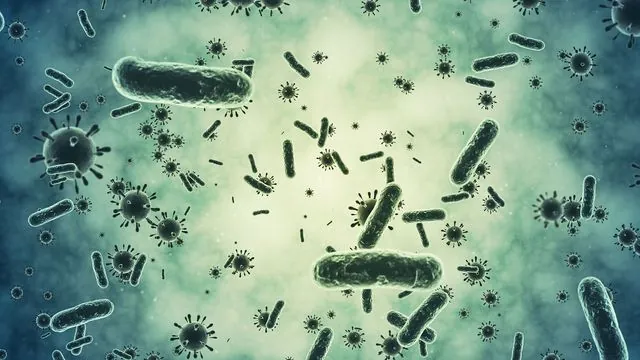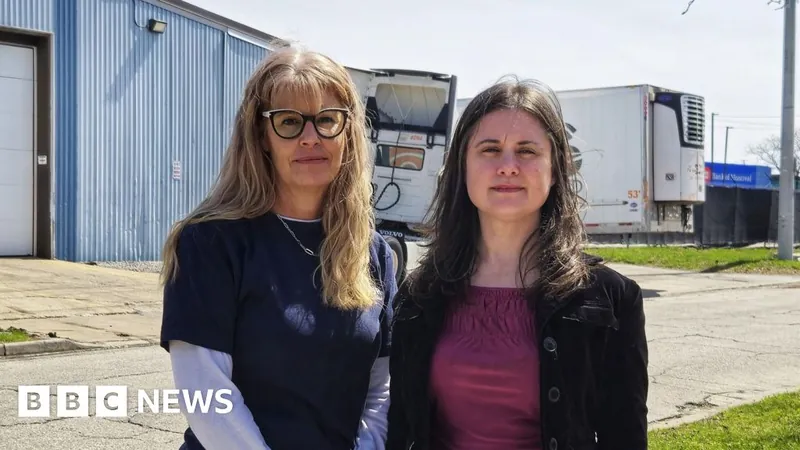
Bacteria Toxin Uses "Molecular Scissors" to Attack Your Gut! Here's What You Need to Know!
2025-04-07
Author: Jacques
Groundbreaking Study Unveils Toxin Structure
In a groundbreaking study published in *Gut Microbes*, researchers have unveiled the intricate three-dimensional structure of a toxin produced by the notorious enteropathogenic Escherichia coli (EPEC) bacteria, highlighting how this toxin effectively invades and disrupts the epithelial cells that crucially line our digestive tract.
The Role of EspC Toxin
The toxin in focus, an enzyme known as EspC, operates like “molecular scissors,” dismantling the internal protein structures of gut cells, instigating significant cellular damage. Professor Begoña Heras from La Trobe University, who co-led the research, emphasizes that comprehending the mechanism of this dangerous bacterial toxin is key to developing new, targeted treatments for EPEC infections, especially in light of the escalating challenge of antimicrobial resistance.
Concern Over Antibiotic Resistance
Professor Heras stated, “Many strains of E. coli, including EPEC, are becoming alarmingly resistant to the standard antibiotics we rely on. This is particularly concerning given that approximately 1.3 million children under five die annually from diarrheal diseases caused by such infections, which lead to severe dehydration and a critical loss of essential electrolytes.”
Types of E. coli and Their Dangers
EPEC is not the only harmful variant of E. coli; there are over five types of these bacteria that employ various strategies to inflict damage on our gut. For instance, Shiga toxin-producing E. coli (STEC) was recently implicated in a food safety scare that involved a salad spinach recall.
Challenges in Treatment Options
Currently, infections caused by different E. coli strains are usually treated with broad-spectrum antibiotics. However, these medications indiscriminately target both harmful and beneficial gut bacteria, a problem compounded by E. coli's rapid adaptation, enabling it to resist treatment options quickly. Dr. Jason Paxman, also a co-leader of the research, highlighted the dire situation facing healthcare professionals, stating, “The landscape of treating bacterial infections has become increasingly complex. We often have to resort to using strong last-resort antibiotics, leaving us with few alternatives.”
The Crisis of Antibiotic Resistance
The disconcerting truth is that some bacterial pathogens are now resistant to all known antibiotics, leading to a medical crisis. While new antibiotics are being pursued, the development process is notoriously slow and the few that reach the market are often subjected to restrictive use protocols. This means that bacteria frequently develop resistance before viable treatment options can be distributed.
Future Directions in Research
The research team, including Dr. Akila Pilapitiya, made pivotal strides using a multidisciplinary approach to understand how EPEC employs the EspC toxin as a weapon against human health. Dr. Pilapitiya remarked, “Although it was established that EPEC uses EspC as a toxin, our knowledge of its structure remained limited. By determining its 3D structure, we elucidated how this toxin operates, which sets the stage for the development of targeted drugs that can neutralize EPEC and safeguard our gut health.”
Hope for New Treatments
Professor Heras expressed hope that the insights gained through this collaborative research could inspire future studies aimed at discovering new treatments for numerous harmful pathogens. She concluded, “Our findings demonstrate the power of integrating different scientific disciplines to tackle complex health issues, ultimately aiding in the advancement of new pharmaceuticals that protect human health.
Conclusion: A Key to Effective Treatments
As the battle against antibiotic resistance escalates, understanding bacterial tactics like those employed by EPEC may hold the key to unlocking new, effective treatments for infections that threaten our lives and well-being.









 Brasil (PT)
Brasil (PT)
 Canada (EN)
Canada (EN)
 Chile (ES)
Chile (ES)
 Česko (CS)
Česko (CS)
 대한민국 (KO)
대한민국 (KO)
 España (ES)
España (ES)
 France (FR)
France (FR)
 Hong Kong (EN)
Hong Kong (EN)
 Italia (IT)
Italia (IT)
 日本 (JA)
日本 (JA)
 Magyarország (HU)
Magyarország (HU)
 Norge (NO)
Norge (NO)
 Polska (PL)
Polska (PL)
 Schweiz (DE)
Schweiz (DE)
 Singapore (EN)
Singapore (EN)
 Sverige (SV)
Sverige (SV)
 Suomi (FI)
Suomi (FI)
 Türkiye (TR)
Türkiye (TR)
 الإمارات العربية المتحدة (AR)
الإمارات العربية المتحدة (AR)